By: Susan Sprout
Find out what’s underfoot with NPC member and environmental educator, Susan Sprout! Catch up on past issues of Underfoot: Introduction & Bloodroot, Trout Lily & Coltsfoot, Blue Cohosh & Dutchman’s Breeches, Ground Ivy & Forget-Me-Nots, Goldthread & Wild Ginger, Common Mullein & Sweet Woodruff, Aniseroot & Butterfly Weed, Myself , Jewelweed & Soapwort, American Pennyroyal & Great Lobelia, Boneset & Common Ragweed, Pokeweed & Blue Chicory, Prickly Cucumber & Wintergreen.
Beech Drops
Beech Drops are parasitic native plants that grow upon American beech tree roots. They lack chlorophyll and derive all of their nourishment from the beech roots through a specialized rootlike structure named a haustorium. It is underground and provides the lifegiving attachment to its host, without which the plant could not complete its lifecycle. As parasites go, this one is not known to cause significant harm to its host tree because it is short-lived.
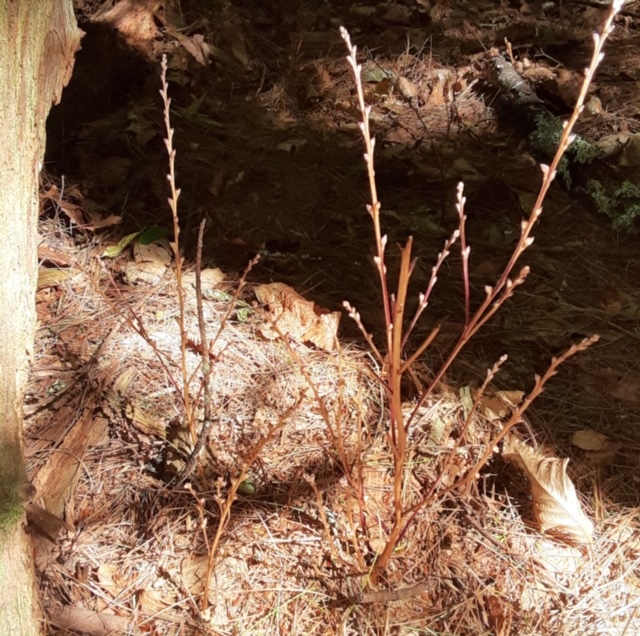
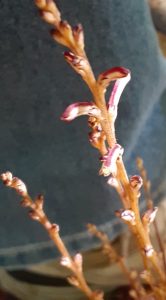
Beech Drops can grow from 5 to 15 inches tall. Their brownish-tan stems and branches blend in with the fallen leaves. I sometimes pass them by when not looking for them specifically. I was looking last week…and what a find! The flowers in the tiny leaf axils were open, and I could see their bright purple edges in the sunlight. The leaves are more like toothy scales, and the two types of flowers can be either pollinated or sterile. It was a treat.
Soon the seeds will be dispersed by rainfall and land on the ground where they will take several years before popping into view. Find them while you can. If you don’t, look for them on a winter walk, their dried up stems poking through the white snow.
Partridge Berry
Our native plant, Partridge Berry, is a low-growing, colonial plant that folks sometimes confuse with Wintergreen. Both are perennials, found in similar growing conditions, have shiny evergreen leaves and bright red berries that may stay on their stems throughout the winter. However, Partridge Berry leaves are different with a pale, yellowish mid-rib or central leaf vein. Wintergreen flowers hang under the leaves, whereas Partridge Berry’s twin white flowers form at the tip end of its creeping stem.
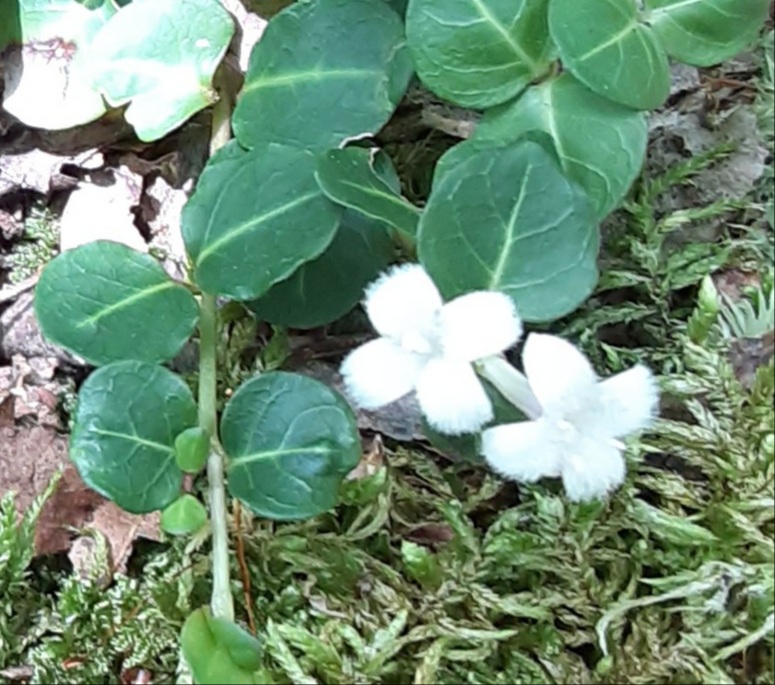
The most unusual clue to identification of the Partridge Berry plant is the berry itself: it has two sets of calyx lobes because the double blooms, after being pollinated, will fuse into one berry. I know, “calyx lobes”? It’s a term botanists use…just think of what the bottom of an apple looks like only much smaller! Two flowers make one berry with a pair of…oh, all right…call them belly buttons! How cool is that!
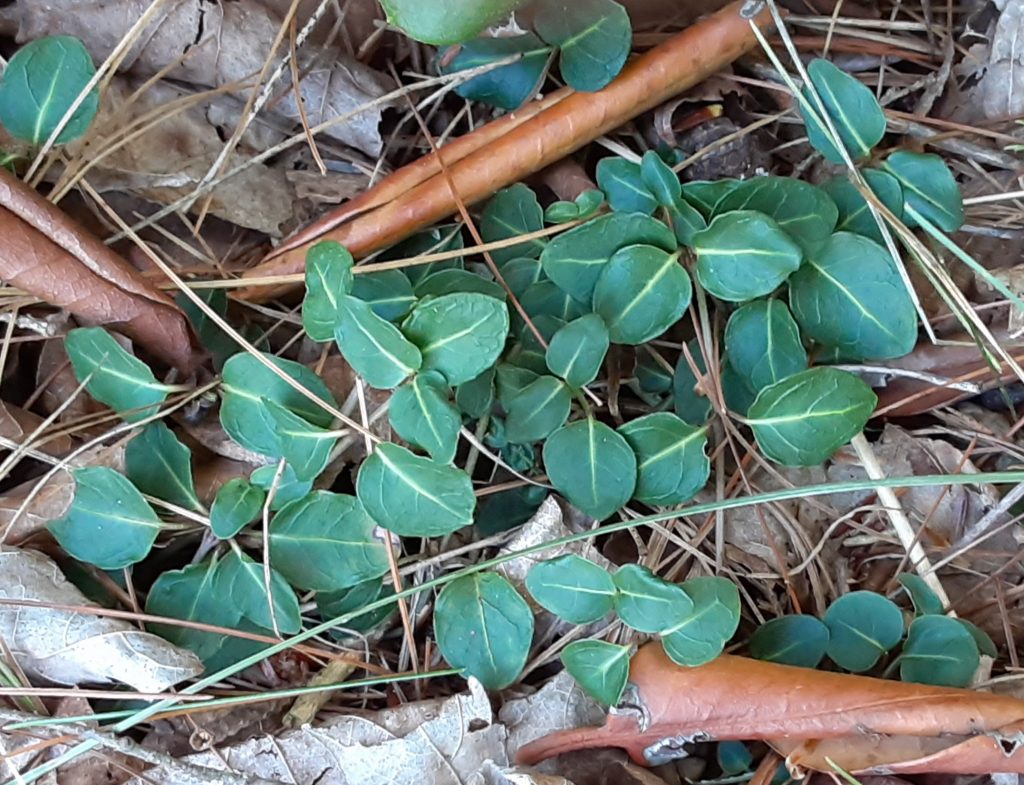
Partridge Berry plant 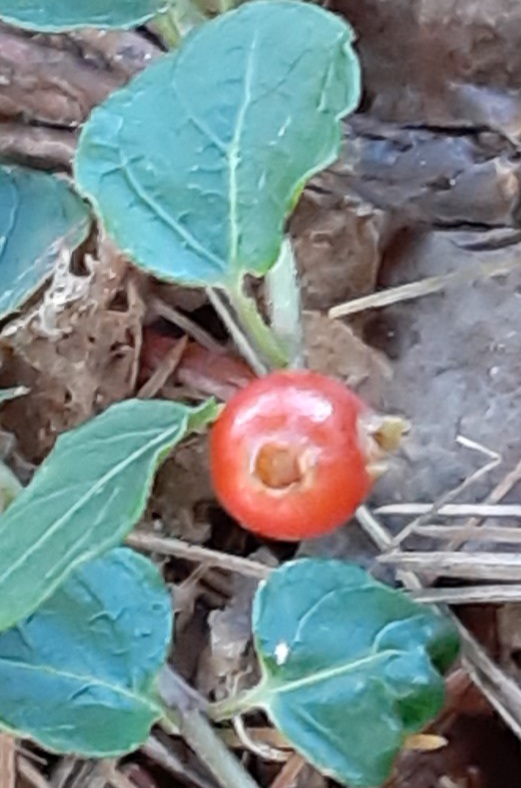
Berry with 2 calyx lobes
This plant provides browse for birds, deer and mice. Women in many of the Native American tribes used this plant as an aid during childbirth. Whether you call it Squaw Vine, Twinflower, Partridge Berry or Mitchella repens, it is a really cool and interesting plant!

